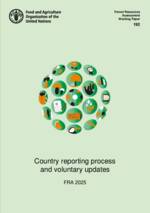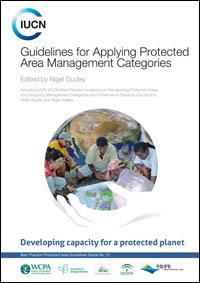- Biblioteca CEPAL
- Biblioguias
- biblioguias
- Estadísticas ambientales y de cambio climático para América Latina y el Caribe
- 1.2 Superficie terrestre, ecosistemas y biodiversidad
Estadísticas ambientales y de cambio climático para América Latina y el Caribe
MDEA - Subcomponente 1.2: Cobertura terrestre, ecosistemas y biodiversidad
Este subcomponente organiza estadísticas ambientales sobre la cobertura terrestre, los ecosistemas y la biodiversidad, así como sus cambios registrables a lo largo del tiempo y en diferentes lugares.
Los tópicos incuidos son:
- Cobertura terrestre
- Ecosistemas y biodiversidad:
- Bosques
Documentos y publicaciones
-
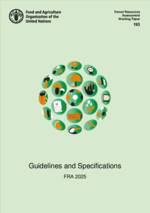 Global Forest Resources Assessment FRA 2025: Guidelines and Specifications
by
Publication Date: 2023
Global Forest Resources Assessment FRA 2025: Guidelines and Specifications
by
Publication Date: 2023 -
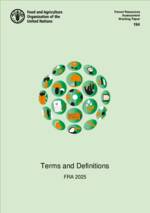 Global Forest Resources Assessment FRA 2025: Terms and Definitions
by
Publication Date: 2023
Global Forest Resources Assessment FRA 2025: Terms and Definitions
by
Publication Date: 2023 -
Global Forest Resources Assessment 2020: Key findings by
Publication Date: 2020 -
CBD Handbook (the 3rd Edition)
Convention on Biological Diversity Handbook -
 Evaluación de los Ecosistemas del Milenio
https://www.millenniumassessment.org/es/index.html
Evaluación de los Ecosistemas del Milenio
https://www.millenniumassessment.org/es/index.html -
State of Europe’s Forests 2015 Report
Publication Date: 2015 -
Global Assessment Report on Biodiversity and Ecosystem Services by
Publication Date: 2019
-
Manual of the Basic Set of Environment Statistics of the FDES 2013 - Ecosystems and Biodiversity Statistics by
Publication Date: 2018 May | Version 1.0 08Methodology sheet of the Basic Set of Environment Statistics of the FDES. (Topic 1.2.2: Ecosystems and biodiversity) -
Manual on the Basic Set of Environment Statistics of the FDES 2013 - Forests, Use of Forest Land, Timber Resources and Other Non-cultivated Biological Resources Statistics by
Publication Date: 2018 September | Version 1.0Methodology sheet of the Basic Set of Environment Statistics of the FDES. (Topics 1.2.3: Forests, 2.3.2: Use of forest land, 2.5.1: Timber resources, and 2.5.5: Other non-cultivated biological resources of the Basic Set of Environment Statistics of the FDES 2013)
Bases de datos
-
ECOLEX- The gateway to environmental law | Legislación relativa a la diversidad biológica Este enlace se abre en una nueva ventanaECOLEX is an information service on environmental law, operated jointly by FAO, IUCN and UNEP.
-
FAO - Global Forest Resources Assessment 2020 (FRA 2020)FRA 2020 examina el estado y las tendencias de más de 60 variables relacionadas con los bosques en 236 países y territorios en el período 1990-2020.
-
ISSG - Global Invasive Species Database Este enlace se abre en una nueva ventanaThe GISD aims to increase public awareness about invasive species and to facilitate effective prevention and management activities by disseminating specialist’s knowledge and experience to a broad global audience. It focuses on invasive alien species that threaten native biodiversity and natural areas and covers all taxonomic groups from micro-organisms to animals and plants.
-
IUCN- Red List of Threatened Species Este enlace se abre en una nueva ventanaEstablished in 1964, the International Union for Conservation of Nature’s Red List of Threatened Species has evolved to become the world’s most comprehensive information source on the global conservation status of animal, fungi and plant species.
-
UN Environment Protected Planet database Este enlace se abre en una nueva ventanaProtected Planet is the most up to date and complete source of information on protected areas, updated monthly with submissions from governments, non-governmental organizations, landowners and communities. It is managed by the United Nations Environment World Conservation Monitoring Centre (UNEP-WCMC) with support from IUCN and its World Commission on Protected Areas (WCPA).
-
UN Biodiversity LabProviding decision makers with the best available spatial data to put nature at the center of sustainable development.
-
UNSD Environmental Indicators Este enlace se abre en una nueva ventanaUNSD disseminates global environmental statistics with indicators compiled from a wide range of data sources, on ten themes: Air and climate; biodiversity; energy and minerals; forests; governance; inland water resources; land and agriculture; marine and coastal areas; natural disasters; and waste.
Metodologías y clasificaciones
-
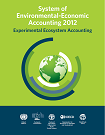 SEEA Experimental Ecosystem Accounting
Fecha de publicación: 2014Ofrece una síntesis del conocimiento actual en contabilidad de ecosistemas. ST/ESA/STAT/Ser.F/112
SEEA Experimental Ecosystem Accounting
Fecha de publicación: 2014Ofrece una síntesis del conocimiento actual en contabilidad de ecosistemas. ST/ESA/STAT/Ser.F/112 -
 Directrices del IPCC de 2006 para los inventarios nacionales de gases de efecto invernadero
/
Fecha de publicación: 2006
Directrices del IPCC de 2006 para los inventarios nacionales de gases de efecto invernadero
/
Fecha de publicación: 2006
-
Guidelines for the Rapid Ecological Assessment of Biodiversity in Inland Water, Coastal and Marine Areas /
Fecha de publicación: 2006 -
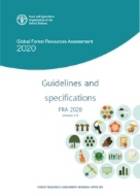 Evaluaciones de recursos forestales mundiales FRA 2020: Directrices y especificaciones
/
Fecha de publicación: 2018FRA 2020, Versión 1.0. Documento de Trabajo No. 189 de la Evaluación de Recursos Forestales
Evaluaciones de recursos forestales mundiales FRA 2020: Directrices y especificaciones
/
Fecha de publicación: 2018FRA 2020, Versión 1.0. Documento de Trabajo No. 189 de la Evaluación de Recursos Forestales -
Convenio sobre la Diversidad Biológica
Tratado internacional jurídicamente vinculante con tres objetivos principales: la conservación de la diversidad biológica, la utilización sostenible de sus componentes y la participación justa y equitativa en los beneficios que se deriven de la utilización de los recursos genéticos. Su objetivo general es promover medidas que conduzcan a un futuro sostenible. El Convenio sobre la Diversidad Biológica (CDB) quedó listo para la firma el 5 de junio de 1992 en la Cumbre de la Tierra celebrada en Río de Janeiro y entró en vigor el 29 de diciembre de 1993.
Hasta la fecha hay 193 Partes.
Enlaces de interés
-
The Biodiversity Indicators Partnership (BIP)BIP is a global initiative to promote the development and delivery of biodiversity indicators.


